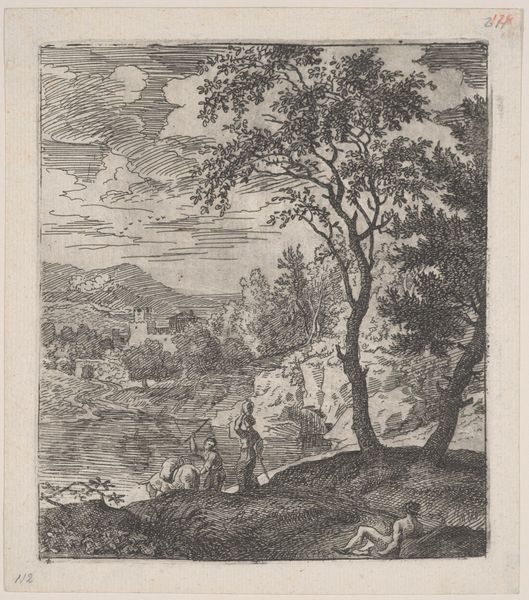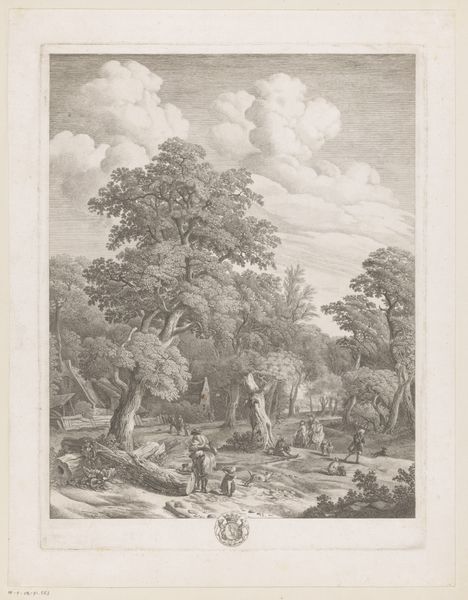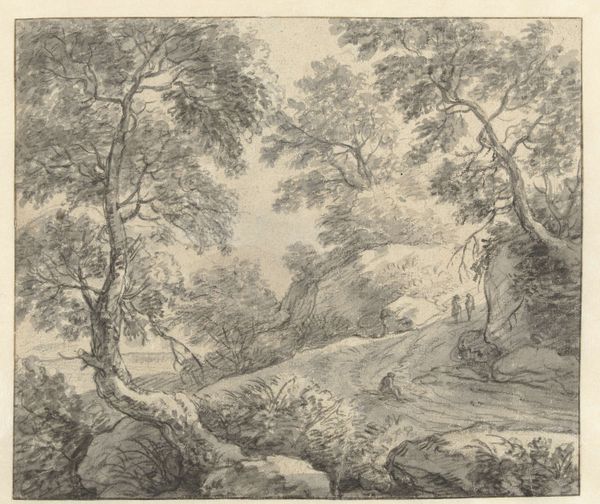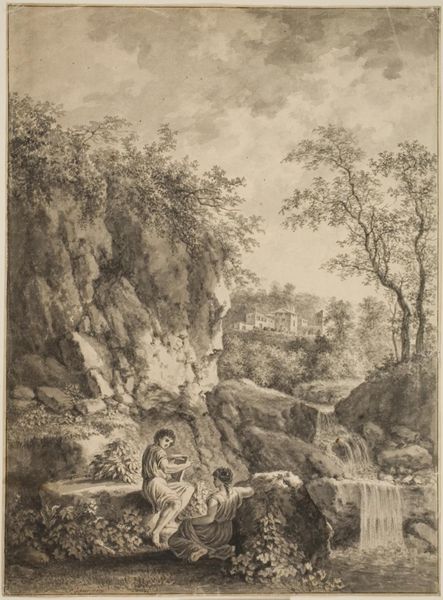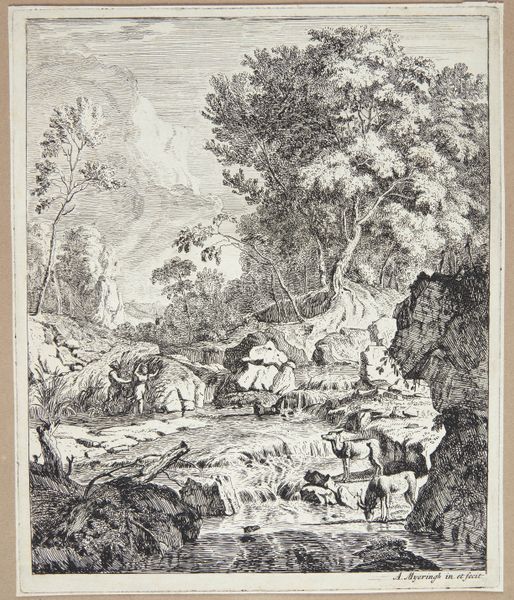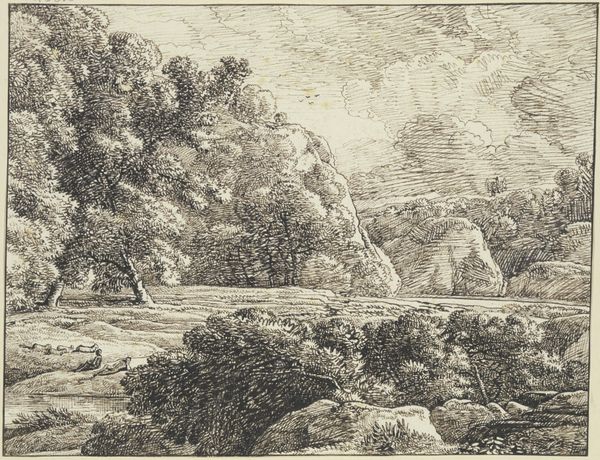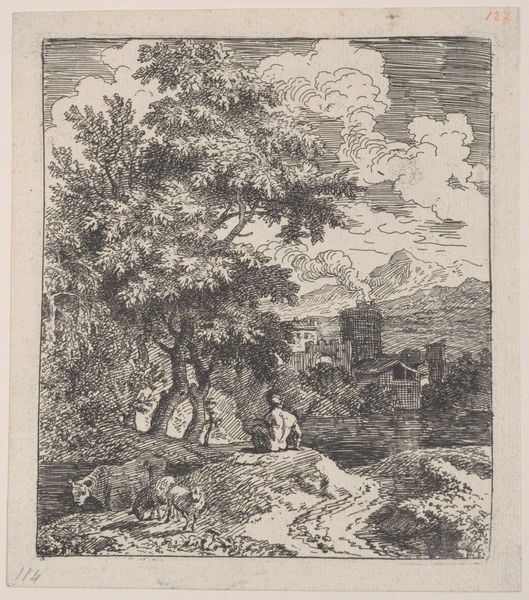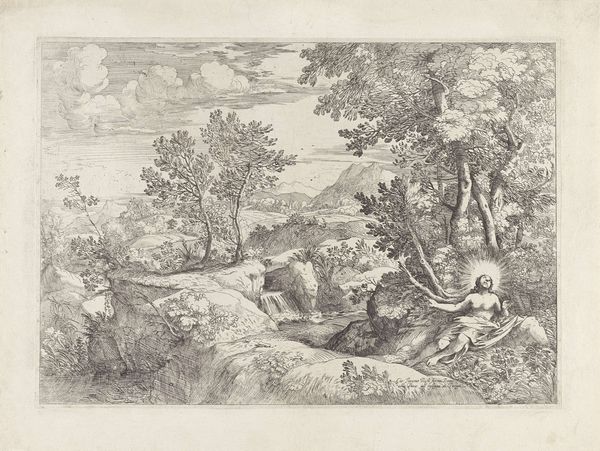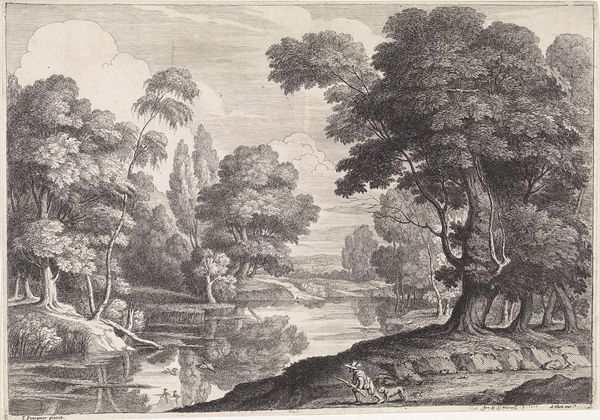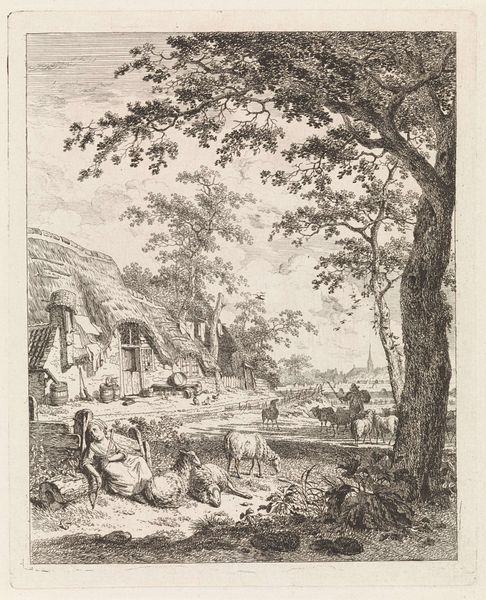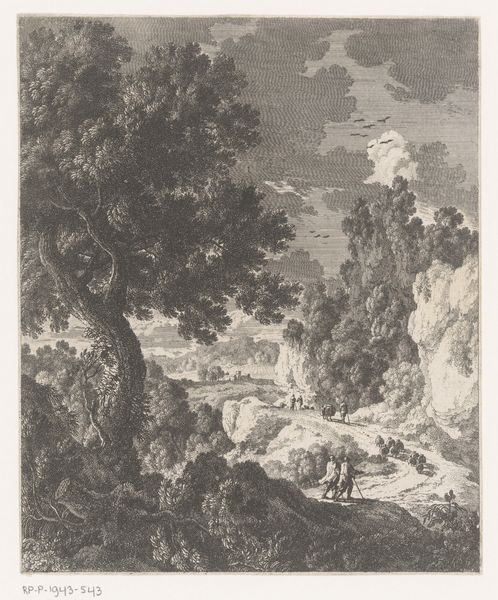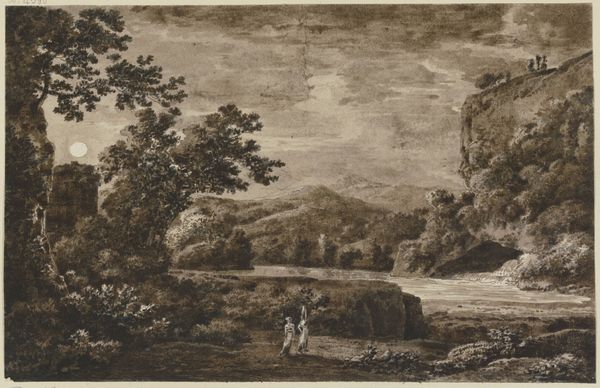
drawing, etching, paper, ink
#
drawing
#
baroque
#
etching
#
landscape
#
paper
#
ink
Dimensions: height 156 mm, width 128 mm
Copyright: Rijks Museum: Open Domain
Curator: This is "River Landscape with a Chapel," a 17th-century etching currently held at the Rijksmuseum. While the artist remains anonymous, its style closely resembles the work of Paul Bril. What are your initial impressions? Editor: There's a serene, almost contemplative quality to it. The intricate detail achieved through etching creates a rich tapestry of textures, especially in the foliage. Curator: It’s a window into the period's fascination with both the sublime and the everyday. Landscapes like this became increasingly popular, reflecting changing societal values and a growing appreciation for the natural world. Think of it as a backdrop against which societal roles were performed. Editor: The choice of etching, an accessible medium for the time, speaks volumes too. Multiple copies could be made, circulating these idealized views to a broader audience. And I find myself wondering about the quality of the paper, the inks... Did the etcher mix his own? What kind of press did they use to produce it? Curator: Exactly, this elevated status helped legitimize landscape as a powerful genre, used by artists and their patrons to signal social status, education, and an appreciation for the aesthetic and moral values associated with nature. Editor: There's a dialogue happening here. High art and accessibility converging in this very image. We see the detailed work that is involved in an etching process. Every line, every mark, represents the labour. And in that labour, a value is instilled to this otherwise pastoral landscape. Curator: Yes! And look closer at the placement of the chapel – perched above the scene but central to the composition, hinting at the omnipresent influence of the church in daily life. These landscapes were more than pretty pictures; they reflected and reinforced existing power structures. Editor: I love how it connects the physical labor, represented through its etched marks and tangible materials, with the less-tangible power structures. It invites us to ponder what work, what effort, underpins the societal image that is projected through art. Curator: Absolutely. Thinking about how visual culture informs how one experiences, say, nationhood, piety, or beauty can transform one’s perspective. Editor: Agreed. Examining the layers – material, social, and artistic – can make art so much more compelling.
Comments
No comments
Be the first to comment and join the conversation on the ultimate creative platform.
